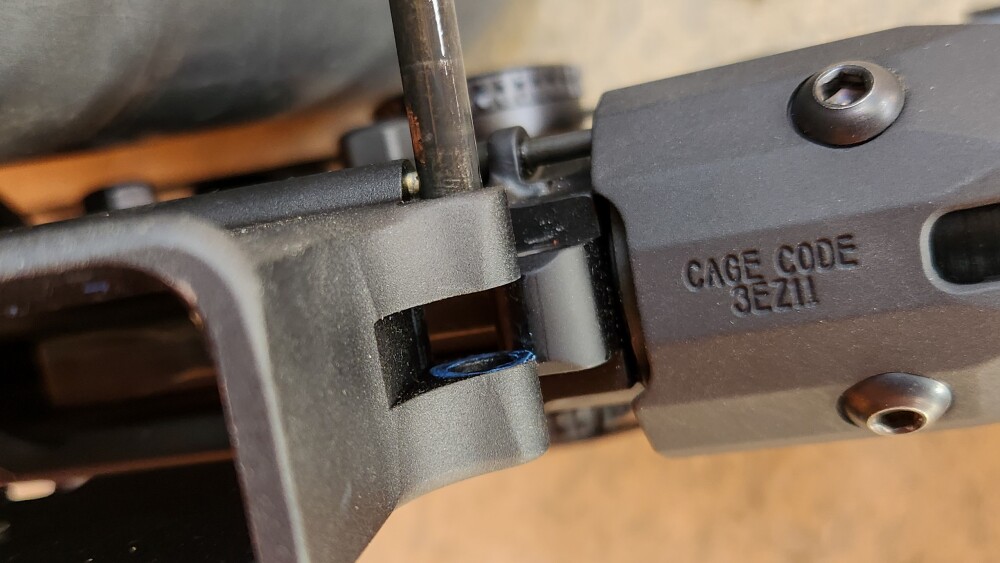Firearms training can be categorized in three ways. The first is static training where the shooter and the target are stationary. From static, we progress to the dynamic training environment where the target or the shooter will move. Examples include running shooters in solo movement drills or using some sort of runner or pulley system to move the target. Then we have interactive training where the shooter and target both move, and the shooter is expected to react to the actions of the target.
Interactive training is also known as force-on-force or reality-based training. It can be done using video simulators but is commonly conducted using live role players in “good guy” and “bad guy” roles. This training is particularly effective because it allows students to apply learned concepts and skills against a live adversary.
Of course, training guns are needed to conduct force-on-force scenarios. These are often duty guns converted to fire-marking cartridges by replacing the bolt and/or slide and barrel. Conversion kits maximize realism and provide firearms that look/handle/feel like real things because they ARE real, but using real firearms can lead to tragic outcomes when done incorrectly. Police1 columnist Kyle Sumpter recently wrote about officers killed during training events
In Sumpter’s article, we see a common theme. Officers point what they believe are inert or converted training guns at fellow officers and pull the trigger. Frankly, reality-based training is probably the most dangerous thing officers may experience in their entire careers. Proper safety checks should never be rushed and never taken lightly. Options to reduce danger do exist but can often lack realism. Things like plastic blue or red guns may have the look of duty firearms but lack functionality and are probably best used as visual stimuli. Airsoft guns have been used with some success but are often not durable enough to be used continuously in the training environment.
A perfect combination of realism and safety
UNIT Solutions Incorporated in Akron, Ohio, may have a perfect combination of realism and safety with the UNIT4. The UNIT4 (U4 for short) looks and feels like an M4 carbine, hence the name, but is more akin to an airsoft gun than a firearm. What separates the UNIT4 from conventional airsoft guns is not only its external realism but also its handling qualities.
The UNIT4 safety, charging handle and magazine release are immediately familiar to anyone previously trained on the M4 carbine or a similar AR platform. Butt stocks and other furniture common to the AR from companies like Magpul will fit. Being built with an eye toward authenticity, other accessories like optics, slings and weapon-mounted lights can be mounted and used. None of this should be surprising. The UNIT4 is made by Lewis Machine and Tool, which has been making rifles for civilian and government entities for years and is a respected manufacturer in the AR market.
Keeping parts from being inadvertently replaced
Even though the U4 looks and feels like a firearm, it will in no way chamber and fire a live cartridge. Internal and external dimensions for the magazine and magazine well, as well as for the upper and lower receiver assemblies, are just different enough to keep parts from being inadvertently replaced.
Being that the U4 will not chamber or fire ammunition, it is not considered a firearm by the BATFE and may be purchased directly without any licensing paperwork or red tape.
TPAK internal magazine
U4 projectiles come pre-loaded in what’s called a TPAK. The TPAK is a disposable plastic “internal magazine” that houses 30 projectiles and the compressed air cylinder that launches projectiles and provides the power to cycle the bolt. The TPAK is inserted into a metal housing that externally closely resembles an M16 magazine. Once the TPAK’s projectiles are expended it is removed from the magazine housing and discarded.
TPAKs come in three different types depending on the intended use:
1. Marking format loaded with paint-filled projectiles. Marking TPAKs are available in several colors so officers can more easily determine who may have shot whom.
2. Hard plastic projectiles approved for marksmanship and force-on-force training with recommended safety gear. These projectiles provide more range than marking rounds, and are best for training outdoors, at longer distances, or anywhere you don’t want to leave behind paint.
3. “Blank” format that contains a compressed air cylinder to cycle the U4’s bolt but does not contain projectiles.
Accuracy and speed
The U4 is a smooth barrel system but accuracy is on par or better than some other force-on-force options. Depending on wind, the system is easily capable of being used to hit USPSA-sized cardboard targets at 15 or 20 yards. Chronographed muzzle velocity measured a consistent 375 feet per second from first to last shot in the magazine with an air temperature of about 80 degrees. This means the projectiles are fast enough to yield a useful trajectory yet are not so fast as to cut or break skin under normal conditions. Protective gear such as a face mask and goggles must be worn to avoid any serious or permanent injury. Caution may be required when shooting against walls or other painted surfaces and a tarp or similar backstop may be warranted to avoid discoloration or damage to walls.
Being that projectiles are launched via compressed air and not from a self-contained marking cartridge, nothing is expelled from the U4 other than the projectile itself. This simplifies and reduces cleanup. Paint residue can be removed by wiping with soap and water and there are no casings to police up at the end of the training day. There are no spent casings under desks or behind filing cabinets to worry about.
The U4 tested here proved itself to be easy to use and reliable. In the unlikely event that a projectile doesn’t exit the muzzle, it should be pushed out by subsequent projectiles. Worst case scenario is to use a standard M16 cleaning rod or similar to push the stuck balls from the barrel. Maintenance is straightforward. Aside from general cleaning and oiling, little else should be required. Spare parts, if needed, are available directly from UNIT Solutions but the U4 should be able to fire upwards of 8,000 projectiles without issue. UNIT Solutions offers a full 2-year warranty on rifles and magazines if a defect is discovered.
User review
Patrick Fiorilli, Executive Director of the Ohio Tactical Officers Association (OTOA) is very familiar with UNIT Solutions products and has been using U4s essentially from the beginning. I reached out via email to ask about his experiences with the U4. Questions and answers are below:
Q: What were you using before you started using UNIT4 training rifles?
A: Primarily UTM and Simunition. Rarkley airsoft as they are cheap.
Q: Has the UNIT product met your expectations?
A: Exceeded expectations. Increased the safety factor in our training classes.
Q: How often do you use these rifles?
A: Very frequently. We train officers all over the state of Ohio and the UNIT Solutions rifle is the ONLY training firearm we use in all of our active shooter training courses.
Q: Have you had any problems?
A: These are very minor issues. Now and then, a magazine will malfunction. The rifle has never failed other than an occasional mag issue.
Advantages of the U4
The U4 offers many advantages over conversion kits or Airsoft weapons but there are some downsides. The U4, being powered by compressed air, is not very loud. Expecting officers to respond to distant gunfire may not work very well depending on location, background noise, etc. Price may also be a concern. The U4 itself is fairly expensive but may actually yield a savings in the long run. Traditional marking cartridges that resemble an actual firearms cartridge are rather expensive and may soon offset any savings of a conversion kit. Depending on quantity purchased, UNIT Solutions TPAKs can equate to about a 50% savings per shot over cartridge systems.
UNIT Solutions offers the U4 in several barrel lengths and configurations and also sells a fake suppressor. Outfitting a department or team with training rifles that closely resemble duty rifles should not be difficult. The company is currently working on a handgun that should be available in 2024. Agencies wishing to learn more or discuss price are encouraged to contain UNIT Solutions Executive Vice President Zack Lloyd at zlloyd@unitsolutions.com. Agencies needing instructor development training should check out the National Law Enforcement Firearms Instructors Association’s Force-on-Force Instructor Certification. More information can be found here: https://nlefia.org/FoF_instructor
Visit Unit Solutions at SHOT Show 2024 in Booth 70446.











